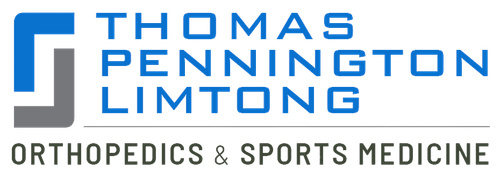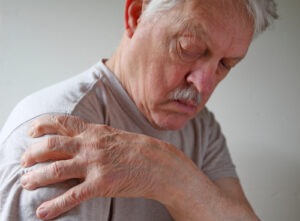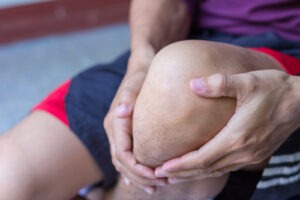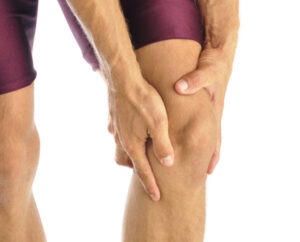 If you are suffering from shoulder pain that has not been relieved by a cortisone shot, you may be considering what your next step should be. In this blog post, we’ll discuss the potential options available when a cortisone shot doesn’t relieve your shoulder pain, such as shoulder surgery or orthopedic surgery. Whether you are experiencing shoulder pain due to an injury or a medical condition, we’ll explore how you can find relief. Read on to learn more about the various next steps to take when a cortisone shot doesn’t alleviate your shoulder pain. At the practice of Steven C. Thomas, MD and Gregory T. Bigler, MD. Our board certified surgeons specialize shoulder surgery in the Las Vegas area.
If you are suffering from shoulder pain that has not been relieved by a cortisone shot, you may be considering what your next step should be. In this blog post, we’ll discuss the potential options available when a cortisone shot doesn’t relieve your shoulder pain, such as shoulder surgery or orthopedic surgery. Whether you are experiencing shoulder pain due to an injury or a medical condition, we’ll explore how you can find relief. Read on to learn more about the various next steps to take when a cortisone shot doesn’t alleviate your shoulder pain. At the practice of Steven C. Thomas, MD and Gregory T. Bigler, MD. Our board certified surgeons specialize shoulder surgery in the Las Vegas area.
Rest, Ice, and Heat
When a cortisone shot doesn’t relieve shoulder pain, the next step is to focus on non-invasive treatment options like rest, ice, and heat. Resting the affected shoulder allows it to heal and reduce inflammation. Applying ice can help reduce pain and swelling, while heat can promote blood flow and speed up the healing process.
If these methods don’t provide relief, it may be time to seek out a shoulder specialist. A specialist can evaluate the shoulder and recommend a personalized treatment plan based on the severity and underlying cause of the pain.
In some cases, non-invasive treatments may not be enough to relieve shoulder pain. In these instances, arthroscopic surgery may be necessary. During this minimally invasive surgery, a small camera is inserted into the shoulder joint to assess and repair any damage. Recovery time for arthroscopic surgery is typically shorter than traditional open surgery.
It’s important to keep in mind that each individual case is unique and requires a personalized treatment plan. Consulting with a shoulder specialist can help determine the best course of action to alleviate shoulder pain.
Physical Therapy
If a cortisone shot doesn’t alleviate your shoulder pain, the next step is physical therapy. A physical therapist will work with you to develop an exercise regimen that can help improve shoulder strength and flexibility. This approach can help reduce pain and improve function.
It’s essential to seek out a shoulder specialist when undergoing physical therapy. A specialist can provide individualized treatment and customize the exercises to fit your specific needs. The therapist will work with you to develop a comprehensive rehabilitation program, which may include stretches, resistance exercises, and range-of-motion exercises.
It’s crucial to attend all of your physical therapy sessions to ensure that you get the maximum benefit from treatment. Your therapist will provide guidance on how to perform exercises correctly and monitor your progress. Your progress will dictate if further treatments, such as arthroscopic surgery, are required.
Physical therapy can be a helpful alternative to surgical procedures. However, in some cases, surgical intervention may be necessary. A shoulder specialist will be able to assess your condition and determine whether arthroscopic surgery is the right option.
Steroid Injections
If the initial cortisone shot didn’t work, your doctor may recommend trying steroid injections. Steroid injections use a different type of steroid than cortisone to reduce inflammation and pain. These injections are usually given directly into the joint or the surrounding tissue.
Similar to cortisone shots, steroid injections may provide temporary relief. However, they can also have potential side effects like joint damage, infection, and thinning of nearby bones and skin. This is why they are not typically used as a long-term solution for shoulder pain.
If your doctor does recommend a steroid injection, they will likely limit the number of injections you can receive. It’s important to discuss the risks and benefits of steroid injections with your doctor to make an informed decision about whether they are the right treatment option for you.
Ultimately, the goal is to reduce pain and inflammation in the shoulder so you can return to your normal activities. If steroid injections don’t work, there are still other options to consider. Next, we’ll discuss surgery as a potential treatment option for shoulder pain.
Surgery
In some cases, surgery may be necessary to relieve shoulder pain that is not responding to other treatments. This may be the case if you have a tear in your rotator cuff or a bone spur that is causing irritation. Surgery may also be recommended if you have a frozen shoulder that is not improving with other treatments.
There are several types of shoulder surgery, depending on the underlying cause of your pain. Some surgeries involve repairing or removing damaged tissue, while others involve joint replacement or reconstruction. Your doctor will help you determine the best type of surgery for your specific needs.
As with any surgery, there are risks involved, including infection, bleeding, and complications related to anesthesia. You may also need to undergo physical therapy or other forms of rehabilitation to help you regain full use of your shoulder.
If you are considering surgery for your shoulder pain, be sure to talk with your doctor about all of the options available to you. It’s important to fully understand the risks and benefits of each option before making a decision. With the right treatment, you can relieve your shoulder pain and get back to enjoying your life.
Contact Board Certified Surgeons Dr. Bigler or Dr. Thomas at the Knee and Shoulder Institute in Las Vegas, NV to Schedule an Appointment:
If you would like to schedule an appointment or learn more about the Knee and Shoulder Institute procedures & treatments performed by Las Vegas, Nevada board-certified surgeons Steven C. Thomas, MD and Gregory T. Bigler, MD. Contact the office today click here.
Serving patients from and around greater Las Vegas, Lake Havasu, Bullhead City, Mesquite, Pahrump, Nevada

 When it comes to
When it comes to  If you have suffered a knee injury, it is important to know the difference between an ACL tear and an MCL tear. ACL stands for anterior cruciate ligament and MCL stands for medial collateral ligament. Both of these ligaments are located in the knee and they serve different purposes, so it is important to understand the difference between an ACL tear and an MCL tear in order to properly treat the injury. In this blog post, we will discuss the differences between an ACL tear and an MCL tear and provide tips on how to tell the difference. At
If you have suffered a knee injury, it is important to know the difference between an ACL tear and an MCL tear. ACL stands for anterior cruciate ligament and MCL stands for medial collateral ligament. Both of these ligaments are located in the knee and they serve different purposes, so it is important to understand the difference between an ACL tear and an MCL tear in order to properly treat the injury. In this blog post, we will discuss the differences between an ACL tear and an MCL tear and provide tips on how to tell the difference. At 


